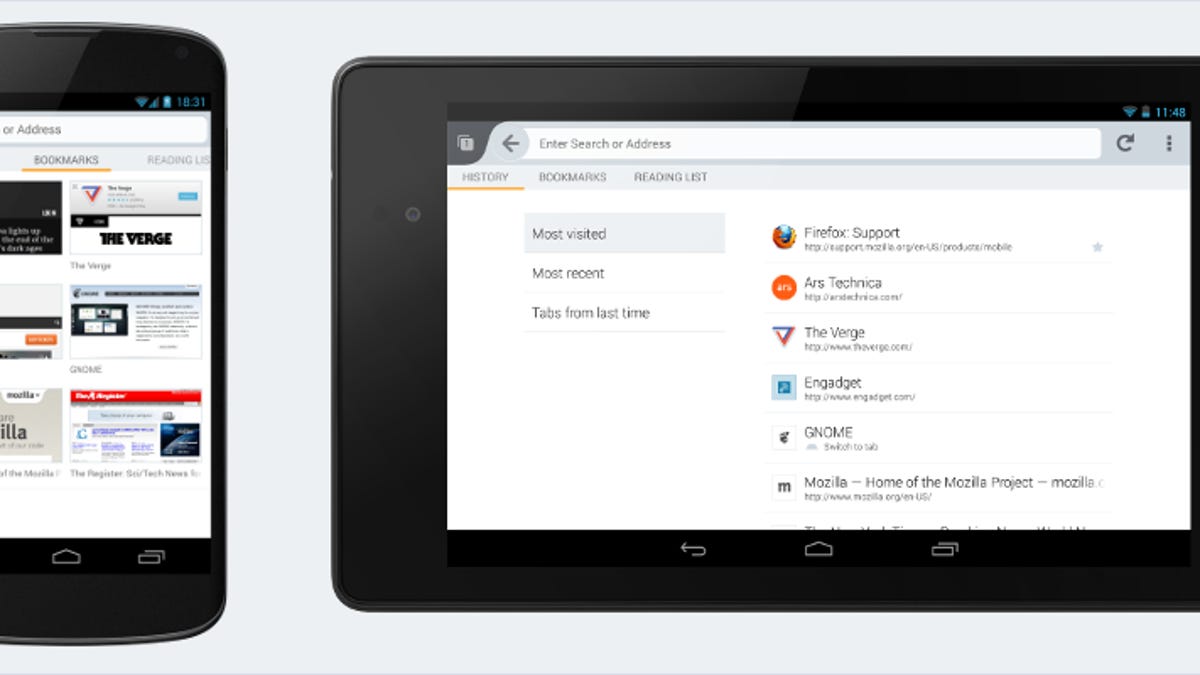Firefox for Android gets new 'awesomescreen' interface
Mozilla is taking new steps to make its mobile browser better anticipate what people might want to see when they start Firefox or tap its address bar.

Firefox years ago helped unlock the potential of the browser address bar with its "awesomebar," and now its developers hope to do the same thing for mobile browsing by revamping the "awesomescreen" in Firefox for Android.
Mozilla has accepted a new awesomescreen design into its early-stage "nightly" builds, user interface engineer Lucas Rocha said in a blog post Wednesday. Features in nightly builds typically make their way to beta and final releases after weeks of testing, debugging, and refinement, so it will be awhile before ordinary users see the feature.
The new approach effectively unifies two aspects of Firefox, the browser's start page and the screen shown when users tap the address bar, Rocha said. It shows thumbnails of Web pages from a user's browsing history, bookmarks, and reading list; users can swipe side to side to switch among the different modes. The overall idea is to transform the otherwise static real estate into something that actively reflects what people are likely to be interested in.
Mozilla carved a place for Firefox in the last decade by offering a browser with features and performance that convinced people to switch from Microsoft's Internet Explorer. But just as Mozilla helped awaken the tech world to the importance of browsers, things got hard. Google arrived with the fast-moving Chrome, and smartphones and tablets arrived with browsers of their own.
Mozilla responded first with Firefox for Android, then with a whole new mobile operating system, the browser-based Firefox OS. But Firefox for Android isn't a default browser and shows vanishingly small usage in the real world, and Firefox OS has plenty of challenges of its own.

